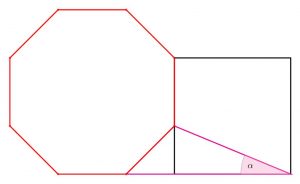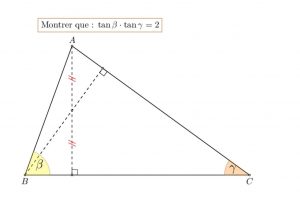Dans un parallélogramme, la somme des carrés des diagonales égale la somme des carrés des côtés.
Si les longueurs des côtés sont notées \(L\) et \(\ell\) et les longueurs des diagonales sont \(D\) et \(d\) alors il s’agit de montrer l’égalité $$D^2+d^2 = 2\ell^2+2L^2.$$
Cela devient simple si l’on considère que notre parallélogramme a pour sommets
\(0\), \(z\), \(z’\) et le dernier sommet est donc \(z+z’\).
La longueur du grand côté est ici \(|z|\), celle du petit côté est \(|z’|\).
La longueur de la grande diagonale est \(|z+z’|\). Enfin il faut se convaincre que
la longueur de la petite diagonale est \(|z-z’|\).
\begin{eqnarray*}
D^2 + d^2 = \left| z + z’ \right|^2 + \left| z – z’ \right|^2 & = & \left( z + z’
\right) \overline{\left( z + z’ \right)} + \left( z – z’ \right)
\overline{\left( z – z’ \right)}\\
& = & z \bar{z} + z \overline{z’} + z’ \bar{z} + z’ \overline{z’} + z
\bar{z} – z \overline{z’} – z’ \bar{z} + z’ \overline{z’}\\
& = & 2 z \bar{z} + 2 z’ \overline{z’} = 2 \left| z \right|^2 + 2 \left| z’ \right|^2 \\
& = & 2\ell^2+2L^2 \\
\end{eqnarray*}


